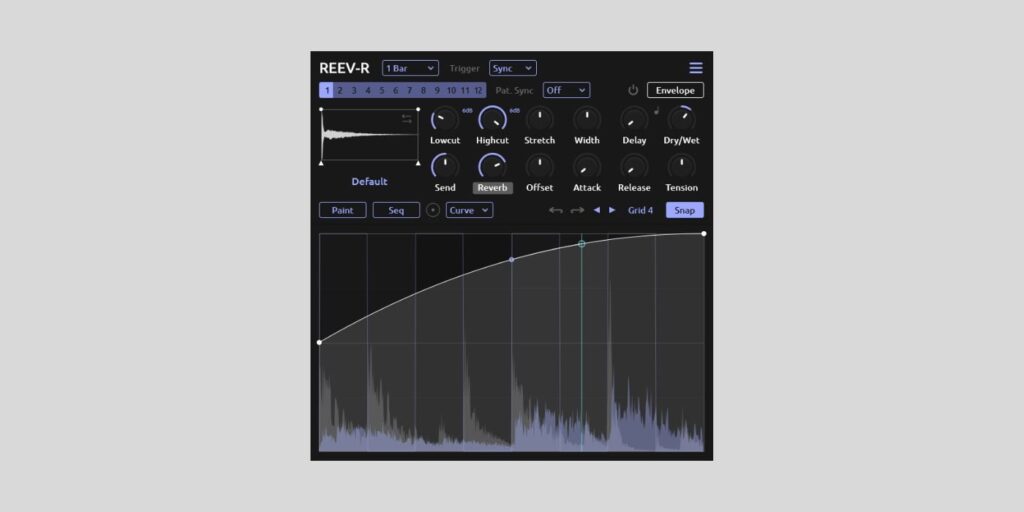Tilr is a name we’ve heard multiple times this year, and it seems that one of 2025’s busiest plugin developers isn’t slowing down as they have just released REEV-R, a free convolution reverb plugin for macOS, Windows, and Linux.
Since February, Tilr has given us Time1 and Gate1, Time-12 and Gate-12, and the very impressive FILT-R (all free).
Tilr’s current releases share a theme of modulation, whether it’s filter modulation, volume, or time.
REEV-R continues the theme as a convolution reverb with pre/send and post/reverb MSEG modulation. You can import external IRs.
I’ve had a short time with REEV-R this morning, and it’s a very interesting and enjoyable plugin that goes far beyond a basic convolution reverb.
REEV-R is a plugin you can use to make elements of your track sit well in a mix or groove in space or as a pretty handy sound design tool.
There are multiple ways to manipulate the current impulse response, including Stretch, Trim, Reverse, Attack, and Decay. You also have Lowcut/Highcut filters and envelope followers for send and reverb.
All of these possibilities are useful, but they become even more impactful when you use Paint Mode or the built-in sequencer to add movement.
Paint Mode offers eight standard shapes and ample space to save user-defined shapes. REEV-R features multiple Point Type selections, including Stairs, Triangle, Wave, Pulse, etc.
The built-in sequencer features a randomizer that generates interesting shapes, allowing you to hear the full impact of REEV-R quickly. You can adjust the step size to make general or precise changes.
Cutting shapes in your reverb, rather than a wet blanket approach, makes a huge difference in the right context, and it’s not just about creating an obvious pumping effect.
You can use the ability to push and pull the reverb so that the sound shines when it needs to, subtly yet still adds a great deal to the overall groove.
Gated or ducked reverb and thinking about sound grooving in space might be pretty standard for experienced producers, but it’s less common for beginners. REEV-R makes it easy to implement and understand, and I love plugins that potentially open new doors for beginners.
By the developer’s admission, REEV-R is somewhat similar to ReverbShaper (CableGuys ShaperBox), and that’s true (with a few differences). But ShaperBox is around $99, and REEV-R is free.
In terms of sound design, I briefly experimented with a few sounds, ranging from acoustic pianos to synth plucks, and found that REEV-R allowed me to transform typical sounds into something more distinct quickly.
Reversing the impulse response is a good (albeit obvious) place to start, and adding movement within the short lifespan of the effect takes you beyond the standard reverse piano sound (which is already pretty cool).
REEV-R has lots of potential, and if you haven’t checked out Tilr’s previous releases, please do so.
The plugin is available in AU, VST3, and LV2 formats for macOS, Windows, and Linux.
I think Mac users might encounter more issues than Windows users during installation, as macOS builds are untested, but the developer provides instructions in the Readme file.
If you’re a macOS/Logic Pro user and you’re still not seeing REEV-R after following the Terminal commands, you should find it in Logic’s Plugin Manager. If it says ‘unable to open,’ select REEV-R, rescan the selection, and Logic should validate the plugin.
If you encounter any further issues, please notify the developer.
Download: REEV-R (FREE)
More:
Last Updated on June 11, 2025 by Tomislav Zlatic.




